Tulip mania
Millions of tulips in the Netherlands, palm trees in Paris, flowering quilts, and artisanal ice cream
Spring has been marching steading onwards, opening petal by petal, until voilà! One day you realize that the city is all green again, with scores of blooming chestnut and linden trees lining the streets and filling the parks.
When the weather graced us with blue skies with little cumuli, like in the photo above, it felt almost like storybook springtime … until looking down at the time, and realizing I needed to sprint to catch the bus on the other side of the river in … one minute. Dream and reality are never too far apart.
The Easter weekend was a long weekend in France, and with some friends, we decided to make the most of the sunny weather by taking a picnic excursion to Parc Bagatelle, a park to the west of the city center, in the Bois de Boulogne forest, and one of the four botanical gardens of Paris. The park and its castle were built in 1775, in a the span of 64 days, following a bet between Queen Marie-Antoinette and her brother-in-law the Count of Artois (yes, really). These days, one can come to escape the city, and in the summer months, admire a rose garden with 10,000 flowers from more than 1,000 species. On the whole, the park has a more English garden style, so it can also feel like a quick trip across the Channel for the price of a metro ticket.
(Side note: Do you know who delivers the Easter chocolates for kids in France? Hint: it is not a bunny like in other countries… )
When we visited the park, it felt like one of the first truly luminous days of the year, with sunshine just infusing everything (our moods too) and lighting up the world in colors we haven’t seen for months. The tulips and wildflowers were just starting to bloom. We enjoyed a picnic with copious amounts of socca (savory chickpea flour-based pancakes from the south of France, topped with lots of salt and black pepper), lots of fruits and vegetables, and cider.
Another surprise in the park is that you can say hello to peacocks, on a quest to show off their fancy feathers, while meandering about.
The week itself was mostly work, sleep; work, sleep; repeat, but the following weekend, I was lucky enough to be able to visit friends in the Netherlands (accessible by a 3.5 hour train trip from Paris!). It is so wonderful to get to glimpse into the lives others’ have created for themselves and spend quality time together, even if we live in different countries.
From home base in Utrecht (a city that is so charming and dynamic and livable), the first stop was the city of Leiden towards the Netherlands’ western coast. Leiden has the Netherlands’ second largest 17th century town center, after Amsterdam. That this architecture is still so intact is largely due to an economic downturn from the end of the 17th until the mid-19th century, after which much of the 16th- and 17th-century city center was restored. Leiden is the home of the painter Rembrandt van Rijn, as well as Jan van Goyen and Jan Steen; the University brought forward 13 Nobel Prize Winners, so you can certainly follow in the historical brick footsteps of many greats.
From Leiden one can take a short bus ride to the Netherlands’ #1 tourist attraction: the Keukenhof Tulip Gardens. The weekend before I had already thought that the tulips and landscape in Parc Bagatelle were pretty close to Arcadia, but it turns out it was really just a warm-up for what the Netherlands’ Keukenhof would unearth… already the view from the bus was pretty spectacular!
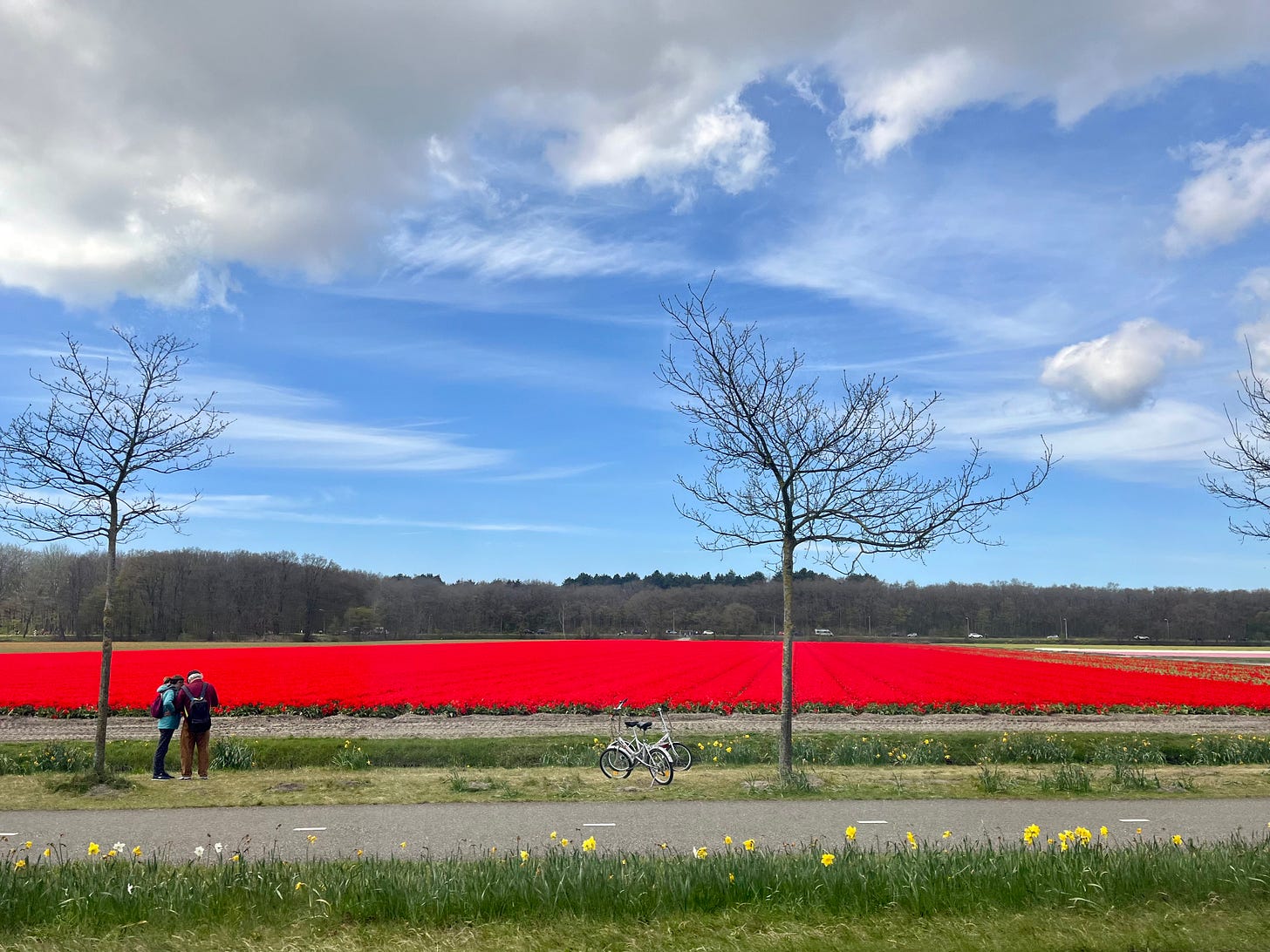
To give some key facts: the Keukenhof Gardens (historically meaning the ‘Kitchen Garden’) are open only from late March to mid May, and each year, about 40 gardeners plant more than 7 million spring flowering bulbs by hand, including 800 different varieties of tulips. The park as we know it, with its 15 km of trails in an English landscape style, was designed by landscape architects Jan David Zocher and his son Louis Paul Zocher in 1857, who also designed Amsterdam's Vondelpark. Interestingly, to ensure continuous blooming throughout the two month opening season, three (!) bulbs are planted in each location: the shallowest bulb will bloom first for a few weeks, followed by the two deeper layers.
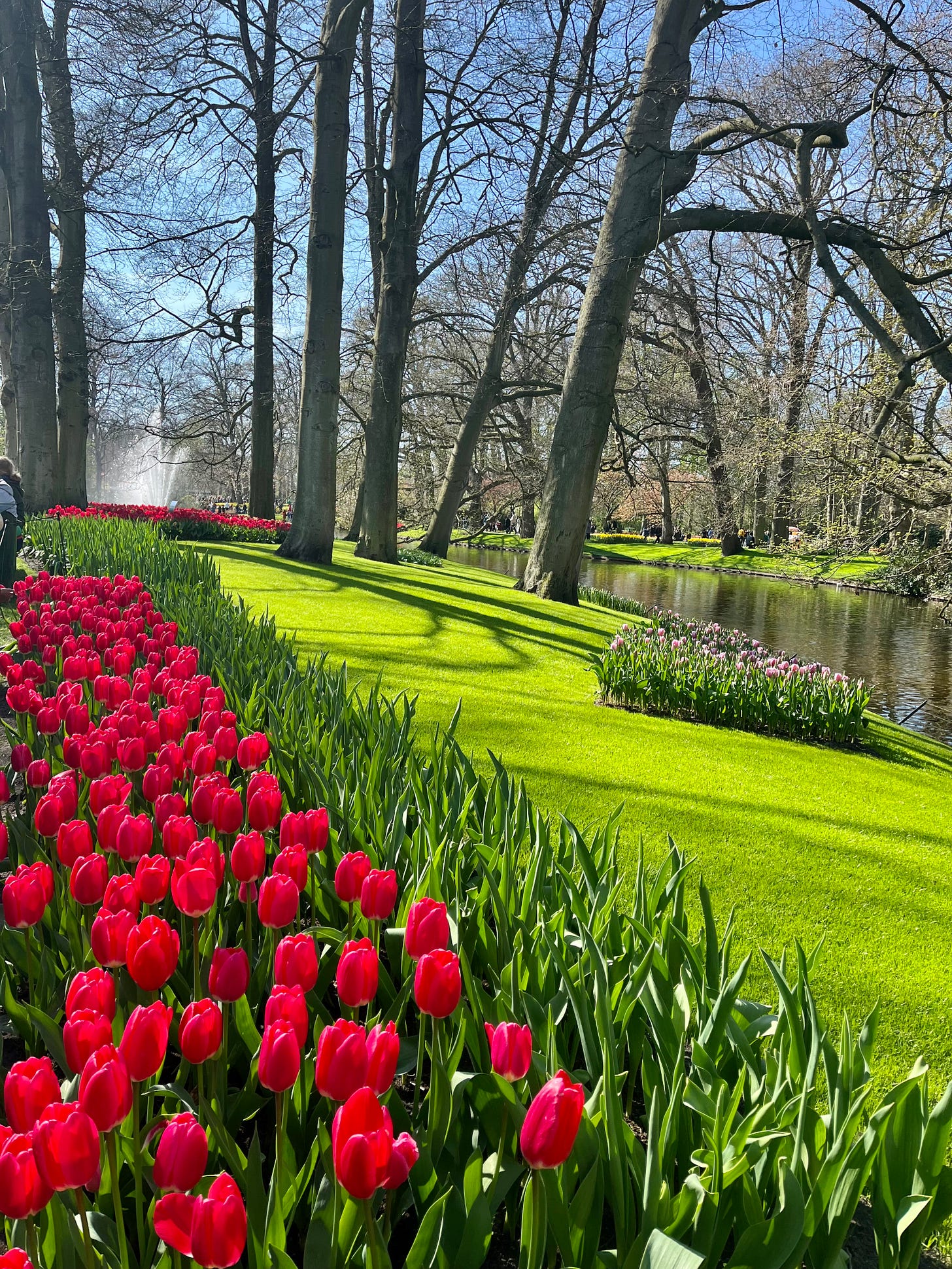
Beyond the Pavlovian association tulips = Holland, I didn’t know that tulips are indigenous to the mountainous areas where Kazakhstan, China, and Kyrgyzstan meet. It was then through diplomatic encounters with the Ottoman court that the Tulip came further west. The flowers thrived in the damp, cold winters and light, nutrition-rich sandy soils of the Netherlands. And in 17th century Calvinist Holland, buying and cultivating the bulbs was not considered frivolous — and therefore not banned — since tulips incarnated the perfection of God, and growing the flowers required patient, hard toil in fresh air. By contrast, ‘indulging’ in dancing, singing, and playing cards was strictly forbidden. With so few pleasurable outlets, it is almost no wonder that, at the peak of ‘tulip mania’, a tulip bulb was worth more than a diamond.
But now less telling of ten-second history, please, and more showing of colorful tulips, you might be thinking…

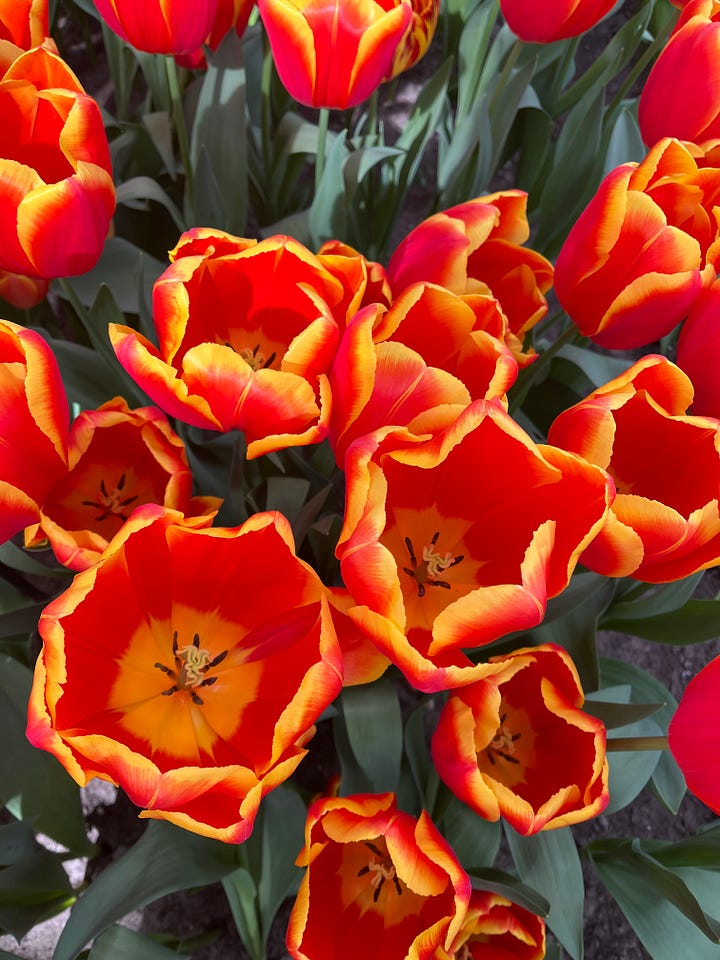
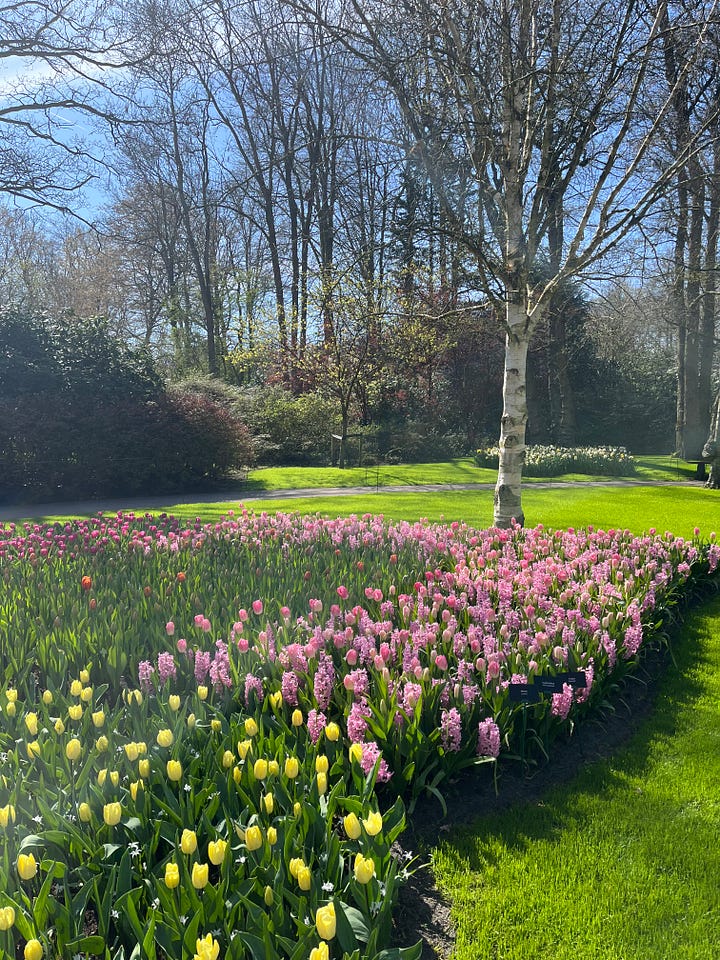
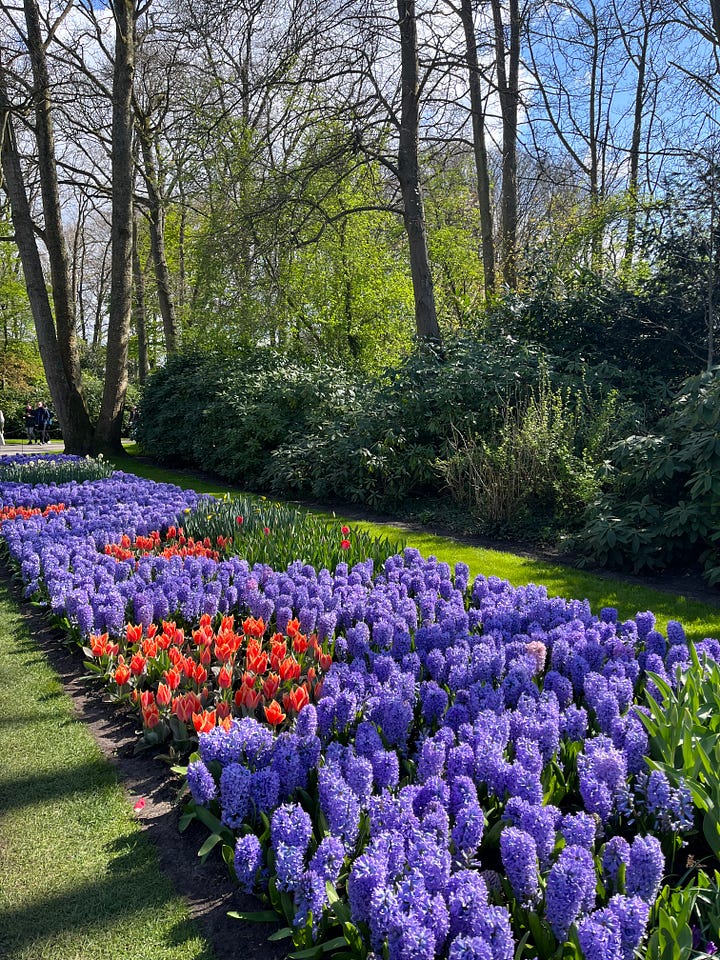
Even back home in Paris the next week, the Netherlands were not too far away, beyond the happy memories. In my work, I am currently doing a project on the risks posed to French communities by coastal erosion, sea level rise, and marine flooding — and Dutch flooding know-how and its past and present of confronting the water are the state-of-the-art.
At the Picasso museum, I also visited an exhibition of the American artist Faith Ringgold (born 1930 in Harlem, NYC), perhaps best known for her painted narrative quilts. One of Ringgold’s quilts, ‘The Sunflower Quilting Bee at Arles’ (1991), had a Dutch connection with van Gogh and his famous sunflowers blooming in front of the yellow house in Arles. The work was powerful with its depiction, in the front of the pictorial space, of eight 19th and 20th century African American woman who changed the course of history, displaying a sunflower quilt as a shared symbol of their achievements. (A quilting bee is a gathering of friends and neighbors who come together to create the squares that will form the quilt.) From left to right these women are Madam C.J. Walker, Sojourner Truth, Ida Wells, Fannie Lou Hamer, Harriet Tubman, Rosa Parks, Mary McLeod Bethune, and Ella Baker.
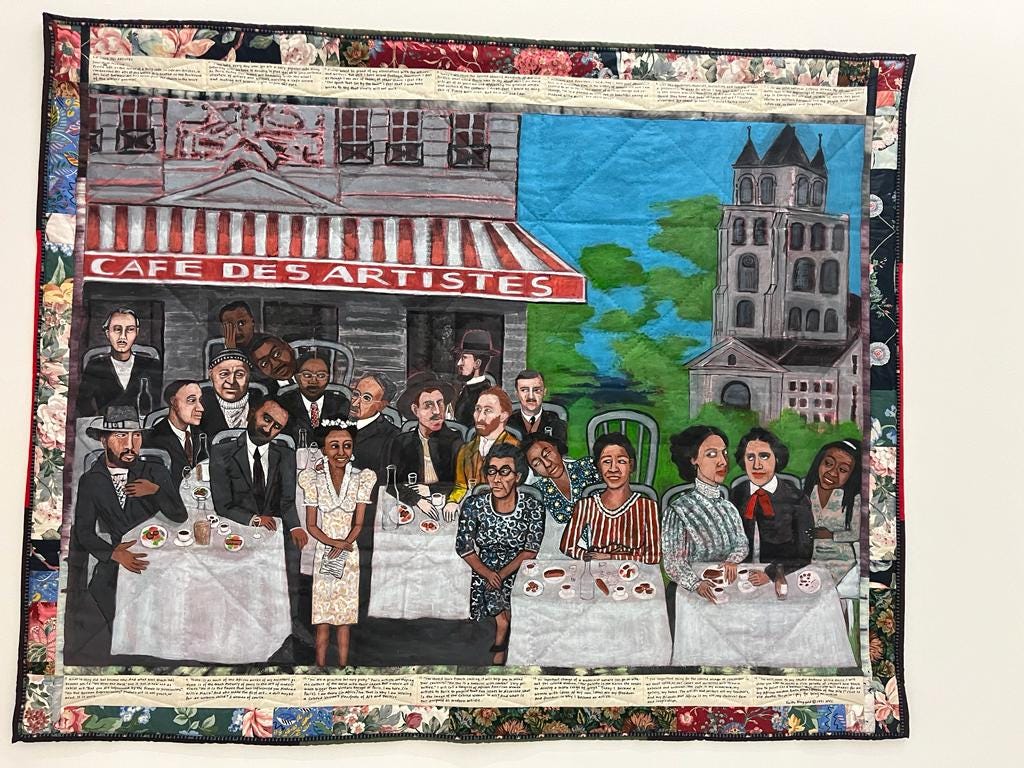
(By the way next time, I will include works from the joyful and creative Picasso x Paul Smith show that I also visited that day).
As a behind the scenes photo, the palm trees were brought back to their summer residences in the Luxembourg Garden. One tree kept coming closer, and closer, until a gardener told me to please get up because I was sitting where the palm tree was planned to spend the summer.
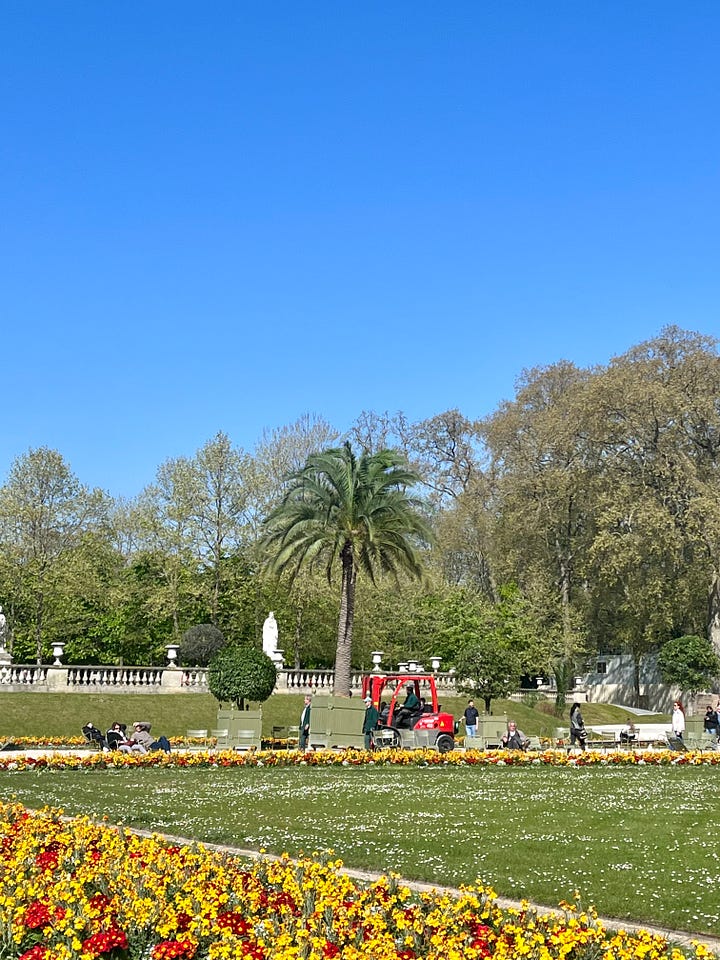
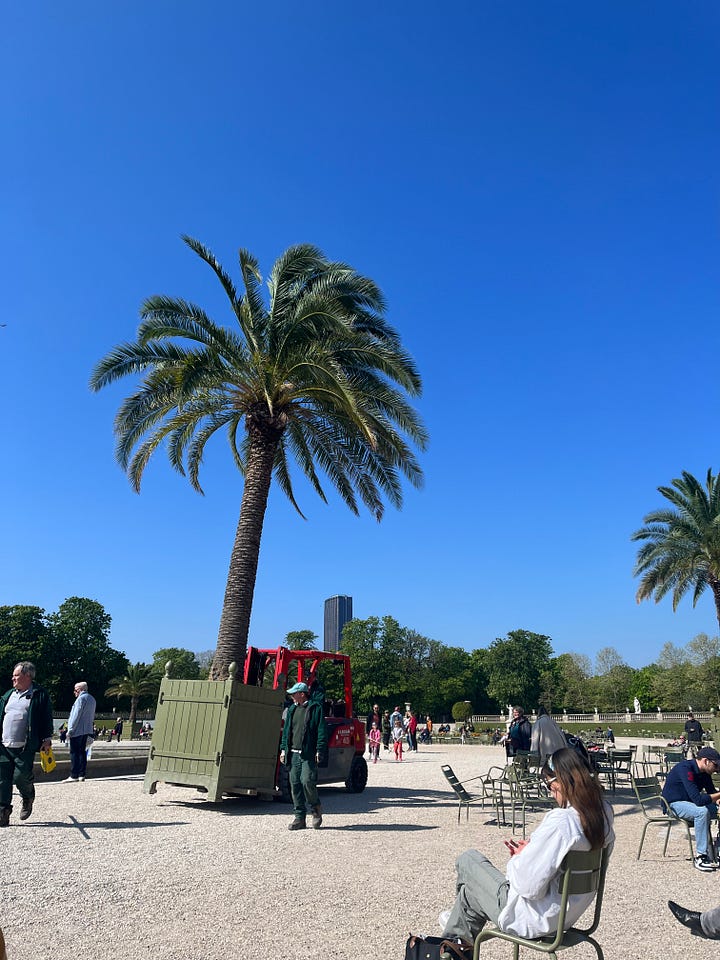
To round out on a sweet note, ice cream season is beginning to be in full swing on the few warm and sunny days. A delicious and bright strawberry sorbet from Berthillon, the classic Parisian ice cream spot, is shown below (now for a nearly criminal 6 euros / scoop).
That said, the real star of the show for me was an ice cream place, REŸS, that a friend recently showed me. They have creative artisanal flavors, with many vegan options that are not just sorbet. I’ve tried the coconut+rice+lemongrass, mango+ginger+Java long pepper, chocolate+cashew+tonka bean sorbet, and passion fruit already (oops, to my wallet and my waistline). The ice creams are not pictured, as apparently I didn’t have the patience to take a photo beforehand. Lack of picture notwithstanding, I can only recommend the place, even more so as it has a 1) sunny terrace that is 2) right across the street from the Academy of Climate, a public space bringing people together to discuss and learn about climate issues — so your perfect weekend afternoon is set!
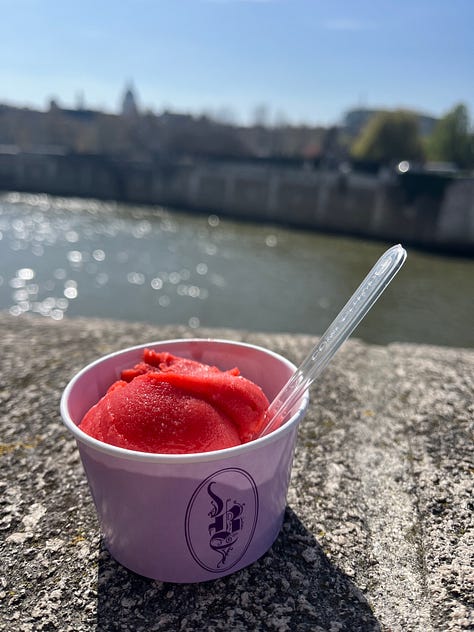
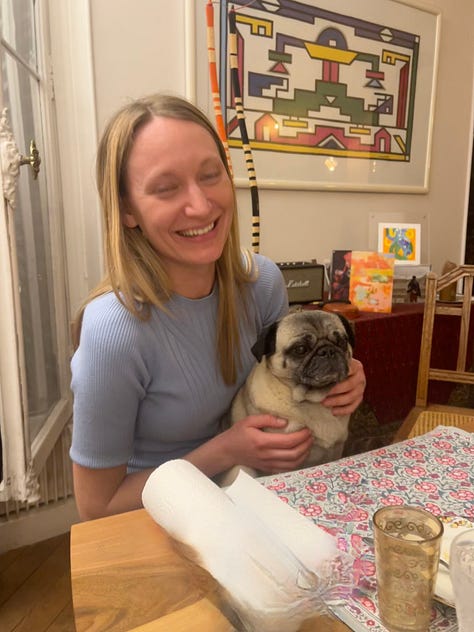

And lastly, name something sweeter than a pug … at a dinner last week, some friends and I were laughing so much after prompting the AI image generator Midjourney to create pug images in various styles. Without getting into any of the thorny questions regarding AI, artwork, and appropriation, I’ll leave this image of a Renaissance pug ‘in the style of François 1er’ (perhaps known best as the French king who brought da Vinci to France in 1516). Whether it is fun for the imagination, absurd, or whatever else, I’ll leave you to be the judge :)
Hoping this spring is treating you well, wherever in the world you are,
Anna Lea






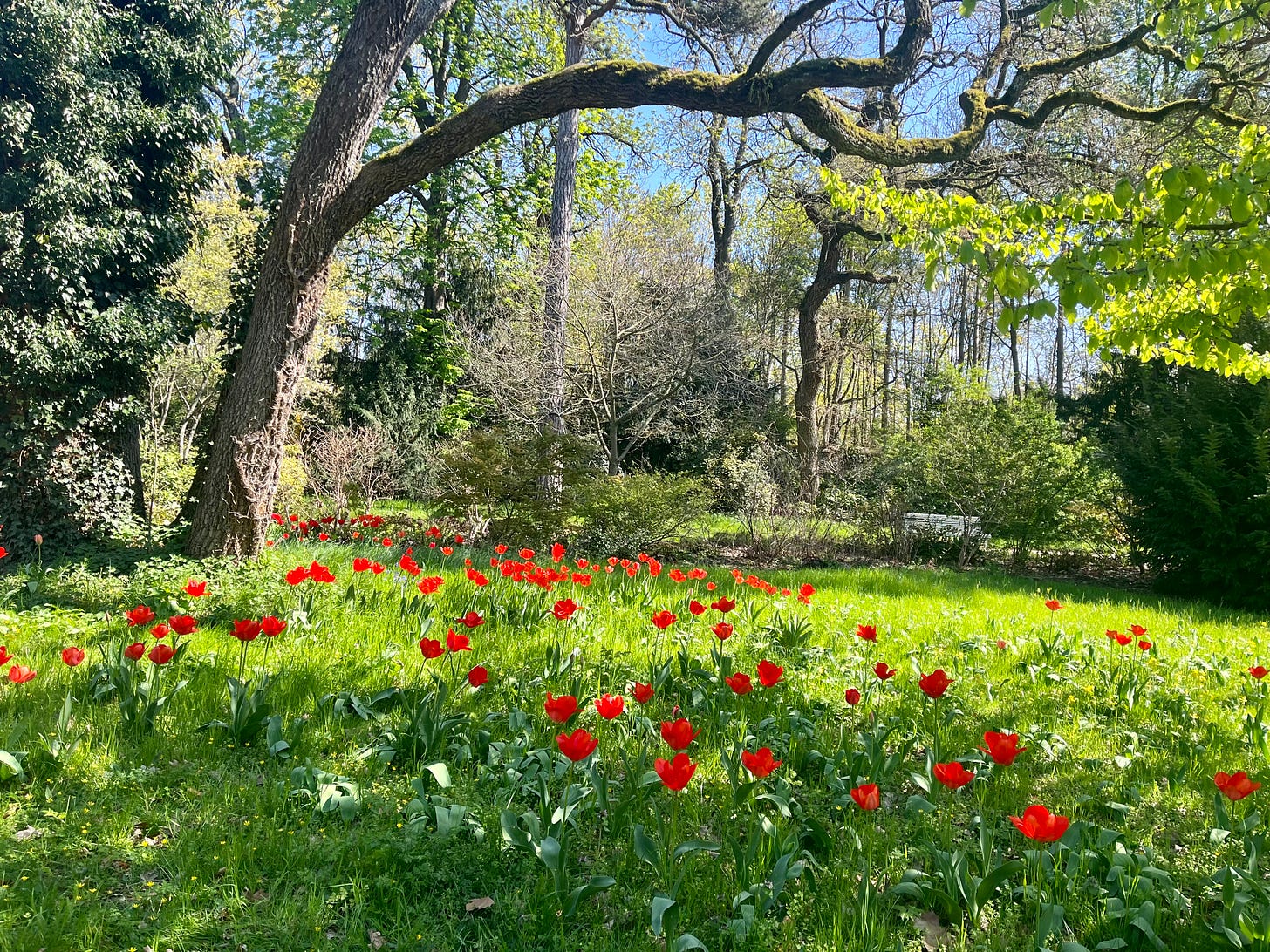

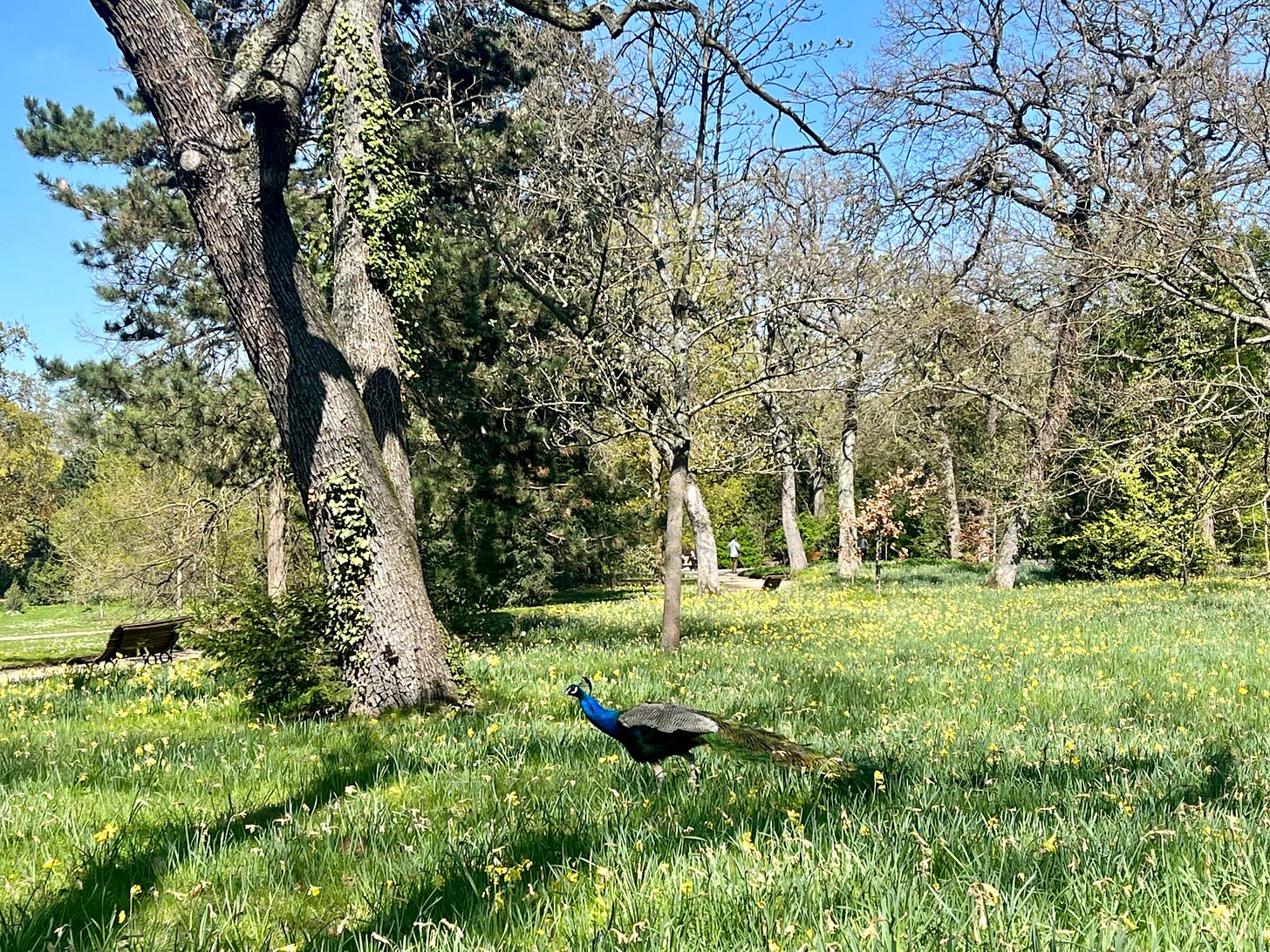

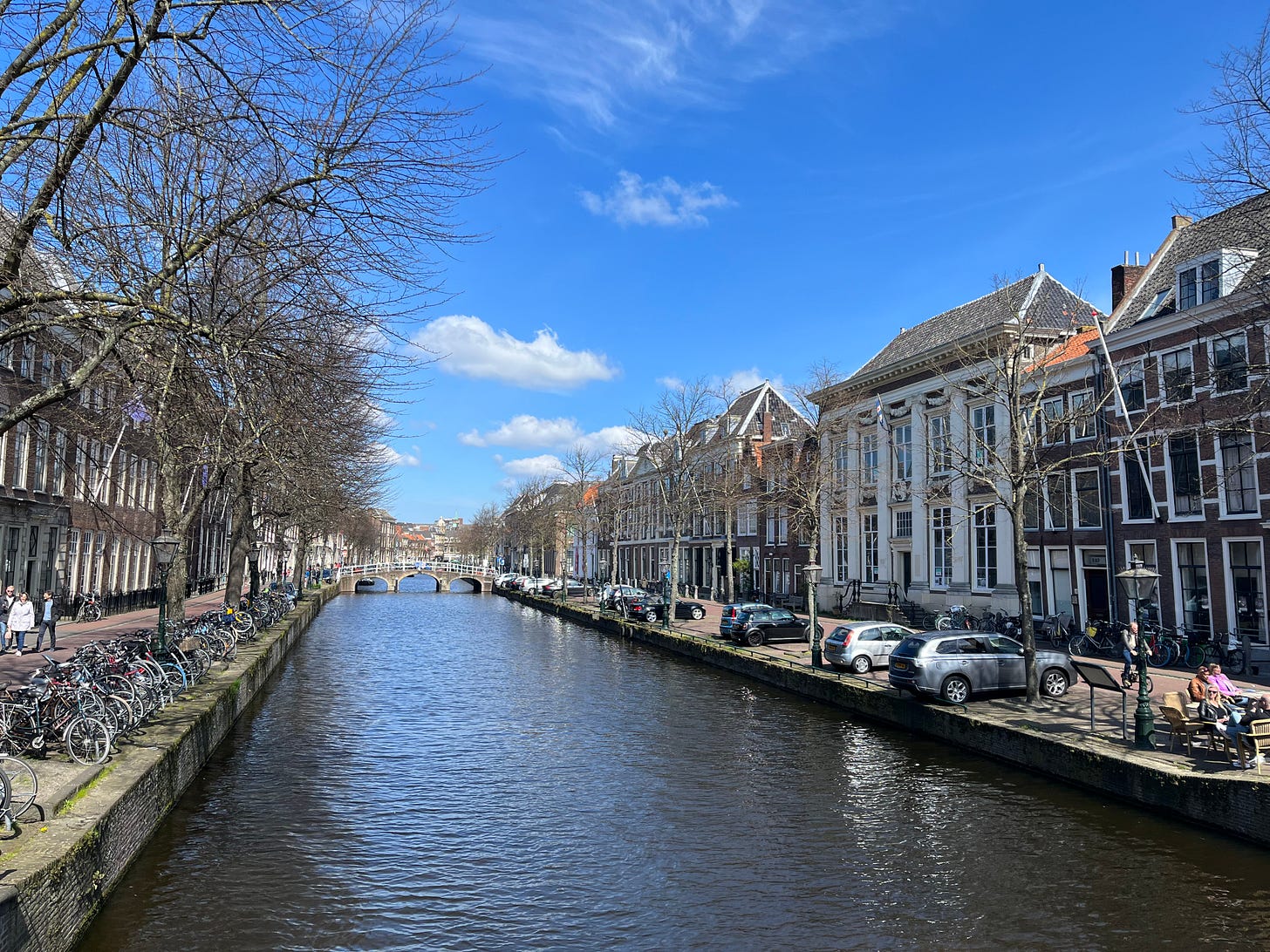

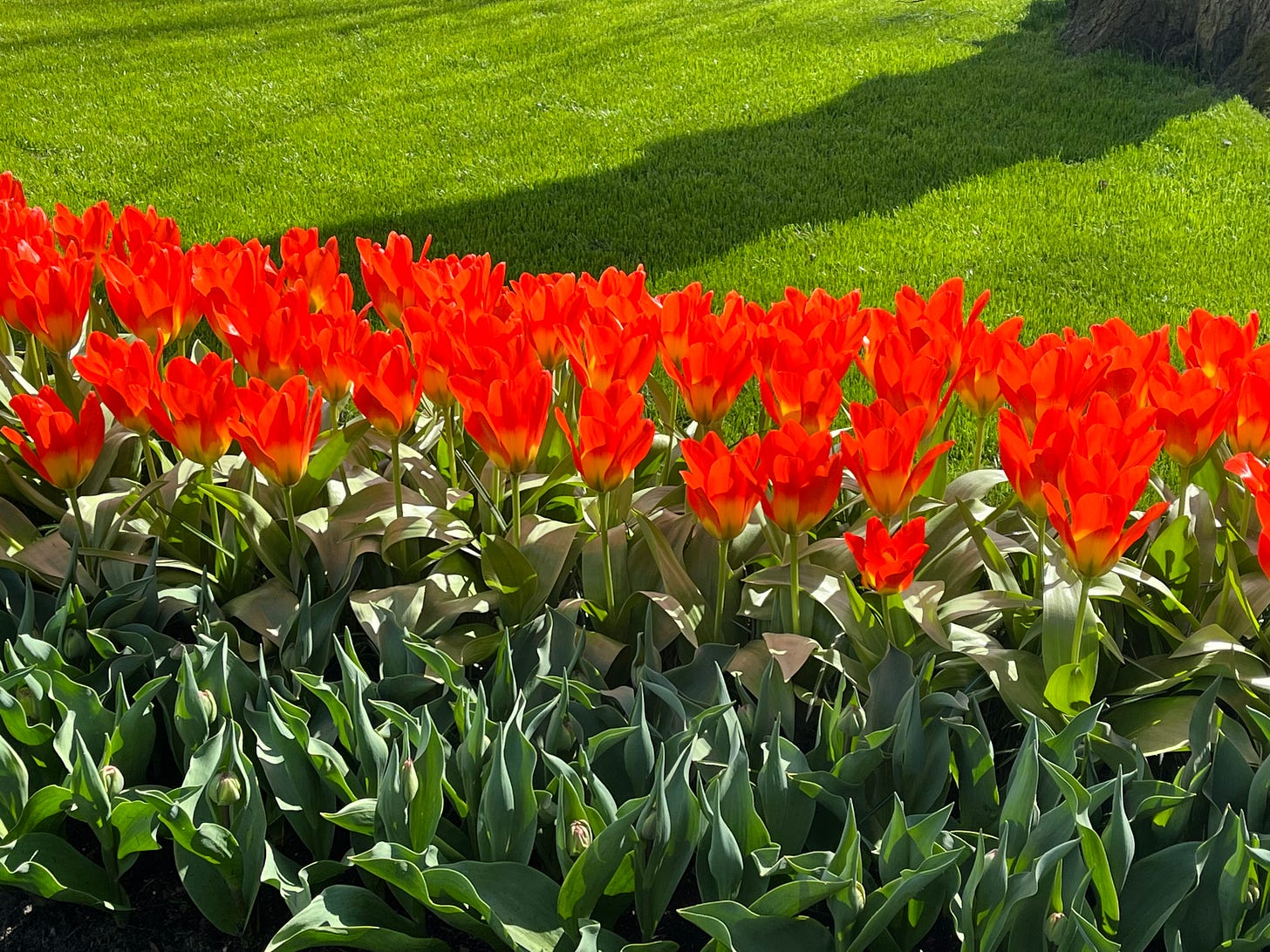
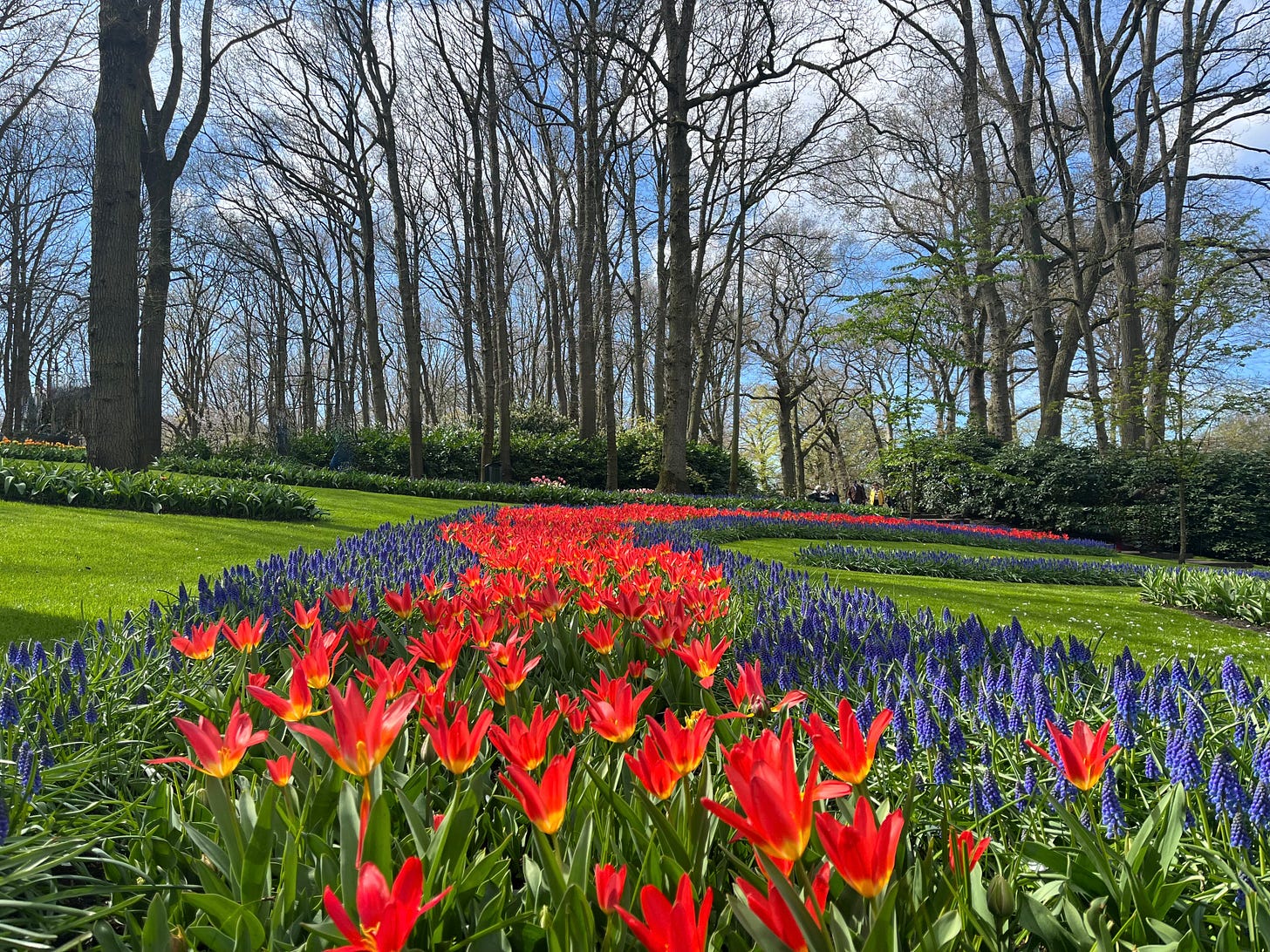
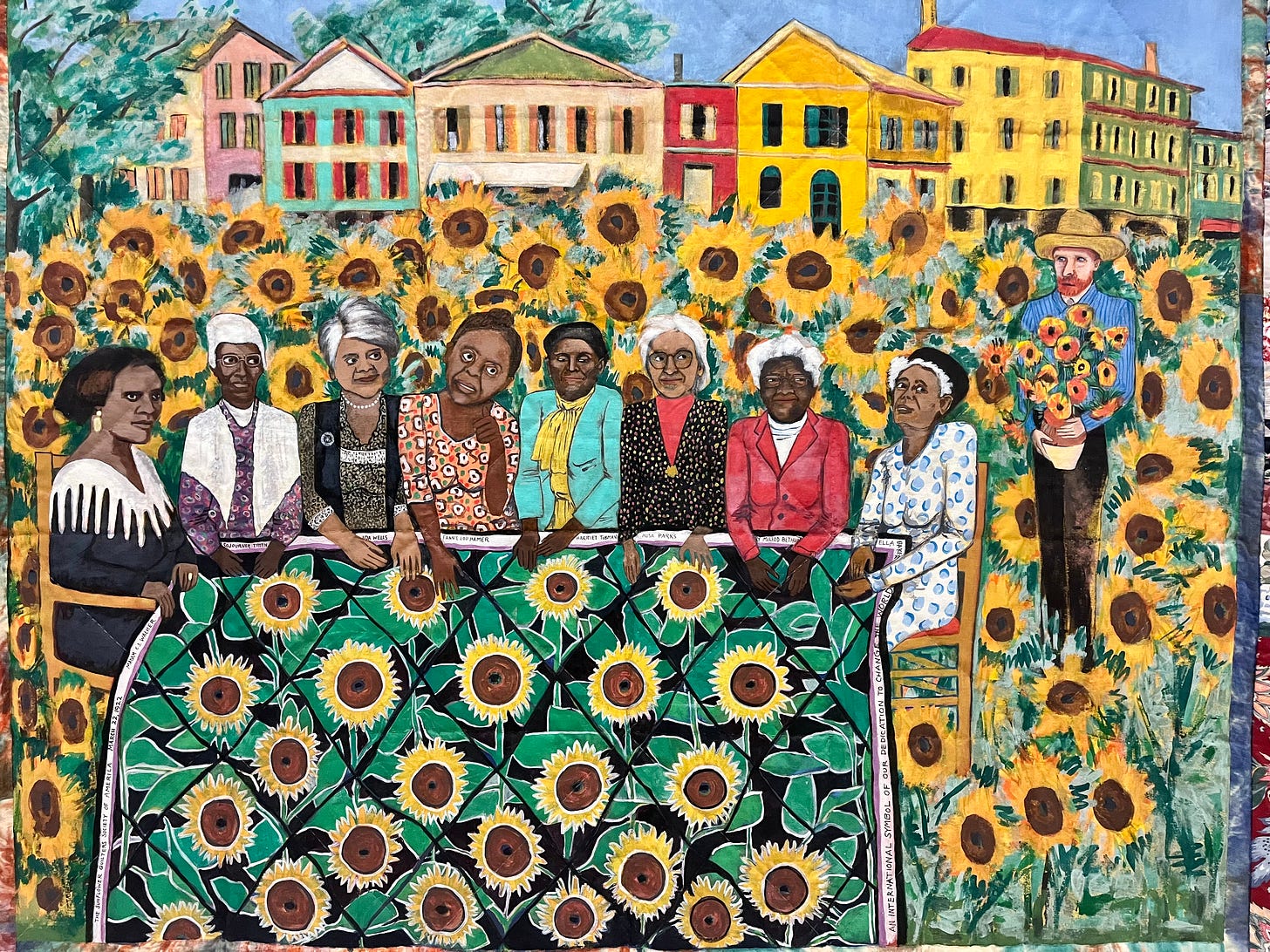
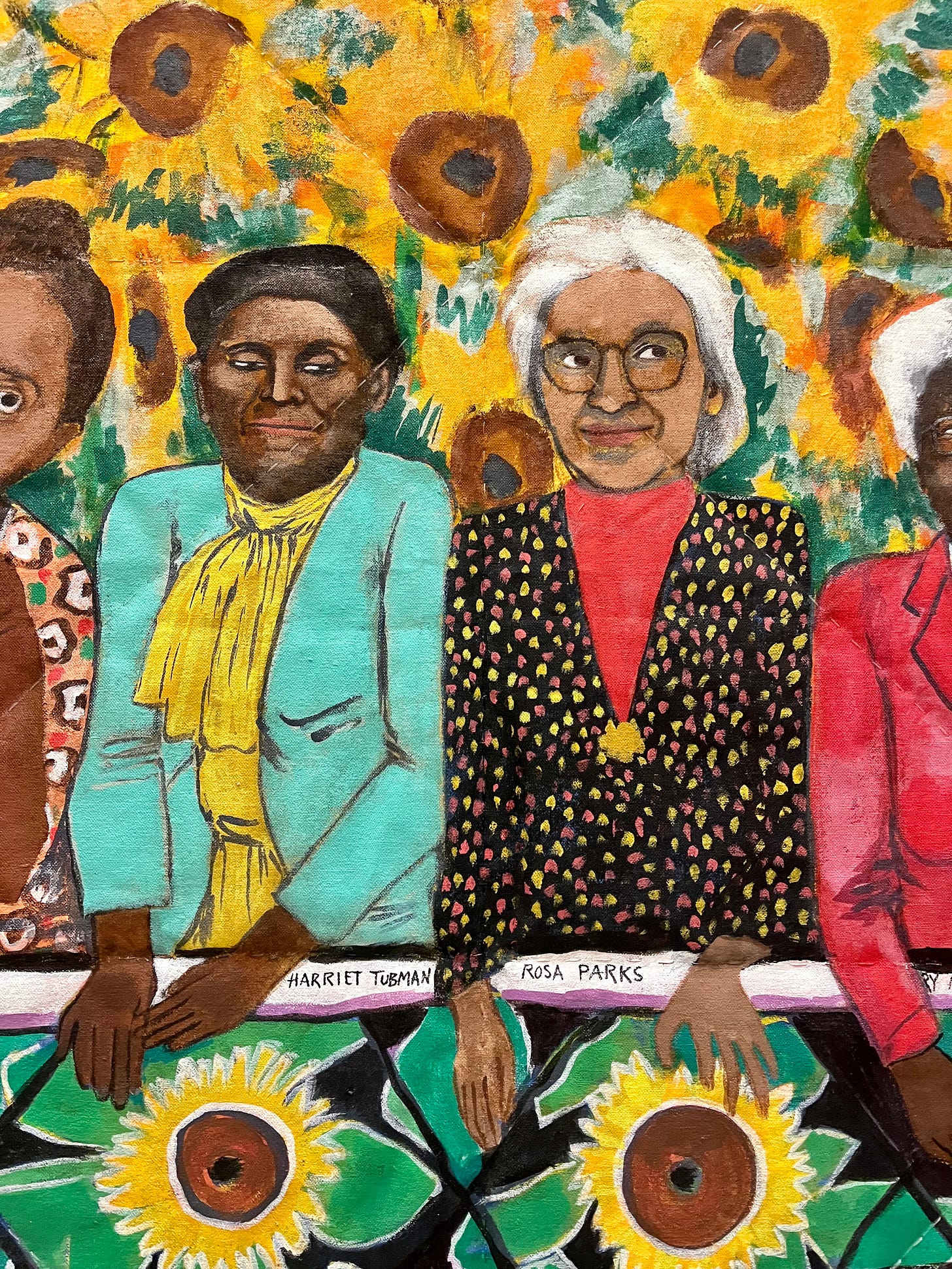

Wow, you make me want to travel more again! Tulip mania is amazing, it makes me think of my sister cause when she visited me last week, and got me flowers for my birthday, she definitely wanted at least one tulip. So now I have miniature tulip spring in my room 🌷 Thank you for the wonderful insight and history! :) and cute pug indeed 😂
Sensational photos - too many to comment .- but the bagatelle Parc wildflowers & the amazingly beautiful tulips stand out. Also the Van Gogh connection to the civil rights pioneers . You did a great job detailing the histories .